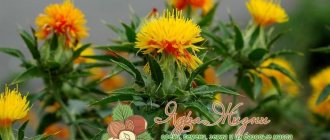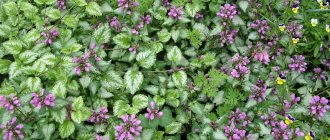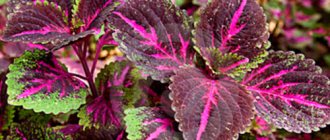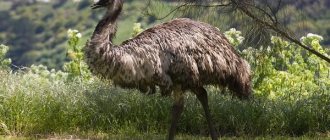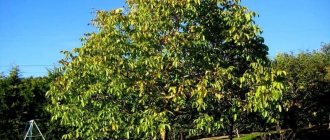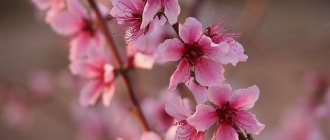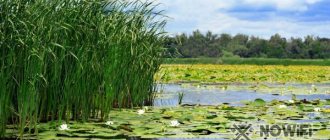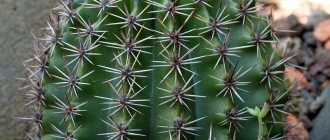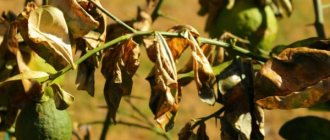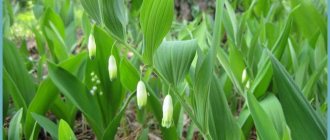Botanical description
Feather grass is a herbaceous perennial plant 30-100 cm high. It grows in groups, in dense turf. The rhizome is not creeping, short.
The stems are erect, thin, glabrous, and shortly drooping under the nodes.
The leaves are very thin, hard, rolled lengthwise or flat, pointed at the top. The width of the leaves is about 0.3-0.5 cm.
The inflorescence is a panicle. It consists of 5-20 spikelets, reaching a length of 3-5 cm. Inside the spikelets, during the flowering period, behind two scales before flowering there is a flower. Blooms from May to July.
The plant reproduces by seeds, which are hidden in the flower scales. The seeds are pointed, oblong up to 1 cm. At the tip they have a spine or hair up to 40 cm in length. The spine is geniculate and bent in the middle. The lower part is bare, the upper part is feathery with hairs about 0.5 cm. Thanks to this part, the seeds are carried over long distances. There is another way of reproduction. From rain or dew, the stems of feather grass become heavier and bend to the ground. The center of gravity is located at the bottom of the grain, so its lower part digs and screws like a screw into the soil, burrowing deeper and deeper. Gradually, the cereal dries out, and the spikelet breaks off from the stem and, together with the seeds, remains on the surface of the earth. Over time, a new plant forms in this place.
Habitat
Feather grass grows in many countries. These are mainly temperate latitudes (Western Europe, from the Middle Urals to Transbaikalia, central Russia). But in the southern regions it can also be found in the steppe and forest-steppe zones, in semi-deserts (Northern African countries, the Gobi Desert, Caspian regions). Selects open hills, rocks, dry meadows, rocky places under rocks. The type of feather grass depends on the region of growth. The plant is very popular in landscape design and is widely used in flower arrangements and borders.
Feather grass on a personal plot
Wonderful, thin, pale yellow-green leaves topped with fluffy feathers of silver-green flowers, ripening to the color of wheat. This versatile broadleaf grass is ideal for a sunny gravel garden.
Feather grass will perfectly emphasize the long-term border between areas. It is ideal for the garden and recommended for introduction into a planting scheme. The feather grass's fluffy flower heads and foliage rise and sway charmingly at the slightest breath of wind.
The beneficial properties of feather grass, as well as the aesthetic value of this plant, make it a welcome guest in personal plots. Feather grass is often used to decorate flower beds and alpine slides.
Sometimes it acts as a background for the main elements of the composition. This plant also looks great if it is planted interspersed with other plants along garden paths.
Feather grass planting and care
Planting and replanting of feather grass begins in the fall. It is not recommended to carry out the transplantation procedure in the spring, since during this period the plant is actively accumulating strength for the flowering period. It is quite early in the feather grass.
Planting seeds in the spring also carries a certain risk: since it must be done at the very beginning of spring, in late April or early May, spring frosts can destroy the seeds before they germinate and take root.
If feather grass is already growing on the site and you just need to increase the planting area, or plant it somewhere else, the easiest way is to divide the adult bush into several parts. If this is the first planting and it is not possible to take a part of an adult plant from someone, the seed method is used.
You should choose the appropriate variety: they differ not only in decorative qualities, but also in winter hardiness. Seeds are sown to a depth of no more than 3 cm, three seeds per hole, this will ensure good germination in the event that the winter is not snowy enough or they are caught by frost during spring frosts.
The seedling method can also be used for growing feather grass. It is necessary to leave approximately 20 cm between individual bushes.
Feather grass does not require special soil fertility. On the contrary, in rich soils it may feel worse, since its weak root system has a hard time competing with other plants. It will also perform well on rocky or sandy soil.
However, feather grass does not like overly acidic soil and too high humidity. Therefore, it is useful to add a little lime to the soil before planting, and if the area is wet, groundwater is not far from its surface, it is necessary to take care of drainage.
But it tolerates drought quite well, since in nature it often grows in semi-deserts. It is advisable to plant feather grass in a sunny area.
Feather grass for decorative purposes
Despite its apparent modesty, feather grass can be used with great success in landscape design. The straw or silver color of feather grass plantings favorably sets off other ornamental plants, dividing the garden or flower garden into separate compositions.
You can use feather grass plantings to smooth out excessive decorativeness and give a corner of the garden a more natural look, reminiscent of a corner of wild nature. In addition, this is an unpretentious plant that does not require much care. Therefore, even a novice gardener can grow it.
The plant is rarely planted as individual bushes: feather grass looks much more impressive in a large mass. If desired, it can be placed in the center of the composition: many types of feather grass are decorative in themselves. To better understand what the final result will look like, you should take into account the external characteristics of a particular type, since different feather grasses can differ quite a lot.
Take into account the climatic characteristics of the species. Some of them are accustomed to warmer places. In our harsh winter, sprouts may die if they are not protected in a timely manner.
By planting it together with other flowers and grains, you can create a spectacular imitation of a flowering steppe in your own garden plot. The only difficulty can be the difference in soil preferences. While most plants love rich, refined and well-fertilized soil, feather grass prefers poor and rocky soil.
Feather grass in folk beliefs
Feather grass is most common in the steppes. That is why most of the superstitions associated with it came precisely from the steppe people - nomads and Cossacks. Such legends include the Cossack belief that feather grass is the grass of the dead. If you bring it into the house, someone in the family will die.
Oddly enough, you can trace the roots of this belief. Firstly, the time of flowering of feather grass is spring, this is the traditional time for the start of raids by warlike nomadic tribes. Therefore, we can say that the flowering feather grass brought grief.
Secondly, this plant has rather sharp spikelets. Grazing livestock could injure the tongue if they ate its shoots. After this, he could no longer eat normally and died. In addition, the feather grass that grew on the battlefields symbolized the graying hair of mothers who did not receive sons from the war.
Chemical composition and beneficial properties
Very little is known about the chemical composition of feather grass, since this herb is practically not used at all in traditional medicine. Official sources only talk about the presence of fiber (up to 35%), fat (up to 2.7%), and protein (up to 10.8%). It is also known that feather grass is rich in cyanogenic compounds, in particular trigloquinine. Large doses of this substance are poisonous due to the presence of large amounts of hydrocyanic acid. These biologically active compounds allow the plant to be used as a medicinal raw material in folk medicine. Subject to the rules for procurement and storage of raw materials, medicinal products based on feather grass have the following effects:
- calming;
- painkillers;
- anti-inflammatory;
- improve blood circulation.
All parts of the cereal crop are used to prepare medicines. Based on them, products are prepared that are used for:
- prostate adenoma;
- paralysis;
- paresis after stroke;
- rheumatism;
- radiculitis;
- multiple sclerosis;
- diseases of the thyroid gland, including goiter.
Notes[edit | edit code]
- For the convention of indicating the class of monocots as a higher taxon for the group of plants described in this article, see the section “APG Systems” of the article “Monocots”.
- Stipa tirsa
: information about the taxon in the Plantarium Project (a plant key and illustrated species atlas). (Retrieved November 28, 2013) - ↑ 1 2 3
Red Book species Stipa tirsa in the Red Book of the Republic of Mordovia
(unspecified)
. Protected natural areas of Russia. Access date: November 28, 2013. - Red Book species Stipa tirsa in the Red Book of the Nizhny Novgorod Region (unspecified)
. Protected natural areas of Russia. Access date: November 28, 2013. - Stipa tirsa
Steven is an accepted name (English). Royal Botanic Gardens, Kew and Missouri Botanical Garden. Access date: November 28, 2013. - Stipa tirsa Steven (Russian). Protected natural areas of Russia. Access date: November 28, 2013.
- Stipa tirsa Steven (S. longifolia Borbás, S. stenophylla (Czern. ex Lindem.) Trautv.) (Ukrainian). Chervona book of Ukraine. Access date: November 28, 2013.
Contraindications
People prone to allergies should be careful when handling feather grass changes. They can cause an attack of suffocation and asthma. Even a harmless bouquet of dried flowers, which contains this cereal plant, can be a source of exacerbation of the disease. It is recommended that pregnant and lactating women avoid using products based on this cereal. When preparing medicines based on horse tail, it is necessary to strictly observe the proportions to avoid poisoning, which manifests itself in the form of nausea, dizziness, abdominal cramps and a feeling of weakness. Before treatment, you should consult a doctor.
Distribution and habitat
In Russia, the species occupies a large area in forest-steppe and steppe regions in the regions of the European part, in the Urals and in the Ciscaucasia: in Belgorod, Volgograd, Kursk, Moscow, Nizhny Novgorod, Orenburg, Penza, Rostov, Samara, Saratov, Sverdlovsk, Tambov, Tula, Ulyanovsk and Chelyabinsk regions, in the Republics of Bashkortostan, Tatarstan and Udmurtia, as well as in the Stavropol and Perm territories. The species probably disappeared in the Republic of Mordovia, Lipetsk and Ryazan regions. In Siberia, it is widespread in the Kemerovo, Kurgan and Tyumen regions, in the Altai and Krasnoyarsk territories. Outside Russia, it is found in Ukraine, Slovakia, Hungary, Romania, Moldova, and in the steppes of Central Europe[5].
Limiting factors are low competitiveness, destruction of habitats as a result of plowing, overgrazing, cattle driving, annual spring fires, and harvesting for bouquets[3].
Traditional medicine recipes
The main thing in the preparation of medicines based on feather grass is compliance with the proportions and use strictly in accordance with the dosage of the resulting drug.
- Tincture for tumor-like enlargement of the thyroid gland (goiter). Add 1 tbsp to a glass of boiled milk. l. dry crushed feather grass. Boil for about 5 minutes and leave for 30 minutes. Take a few sips (2-3) before meals 3 times a day. You can also make lotions from this decoction on the area where the thyroid gland is located.
- Prostate adenoma. If you are ill, you can prepare a sitz bath with herbs: feather grass (preferably feathery) and horsetail. Mix the plants in a 1:1 ratio. Pour three handfuls of the resulting mixture into 2 liters of boiled water. Leave for about 50-60 minutes and filter. Take a bath before bed, wrapping yourself in a blanket or warm blanket. It is advisable to do an enema before the procedure.
- Paralysis. For a glass of milk brought to a boil, take 1 tbsp. l. raw materials. Boil for 15 minutes and let sit for an hour. Take in small sips before meals 3 times a day. For paralysis, you can also use a herbal mixture that includes feather grass and Echinops. In this case, the Echinops will enhance the effects of the feather grass. Chopped dried herbs, take 1 tbsp. (1:1), add to a thermos and pour a glass of boiling water over them. Leave for 12 hours. Strain the finished infusion and drink throughout the day.
- Radiculitis and multiple sclerosis. Use 1 tsp. mixtures of feather grass and Echinops seeds. Place in a dark container and add 100 ml of alcohol. Leave in a dark place for 3 weeks. Strain and take 1 tsp orally. 2 times a day 60-90 minutes after meals. For severe radiculitis, rub into affected areas.
- Rheumatism and joint pain. In this case, you can use separately harvested seeds. 1 tsp crushed seeds pour 100 ml of alcohol. Leave in a dark place for 7 days. Take orally an hour after meals 2 times a day (1 tsp). If you feel pain, you can lubricate the affected areas with the product. Another remedy for these ailments is a decoction of milk or water. Boil the dry raw material until it swells and leave to brew for about 20-30 minutes. When warm, apply to the sore spot for 30 minutes, wrap with a cloth to maintain heat.
Security status[edit | edit code]
In Russia[edit | edit code]
In Russia, the species is included in many Red Data Books of the constituent entities of the Russian Federation: Volgograd, Voronezh, Kursk, Lipetsk, Nizhny Novgorod, Moscow, Omsk, Penza, Rostov, Samara, Saratov, Tula and Tyumen regions, as well as the republics of Mordovia and Tatarstan. It grows on the territory of several specially protected natural areas of Russia[6].
In Ukraine[edit | edit code]
Included in the Red Book of Ukraine, it is protected in the Lugansk (branch “Provalskaya Steppe”, “Streltsovskaya Steppe”), Ukrainian Steppe (branch “Khomutovskaya Steppe”), Karadagsky, “Elanetskaya Steppe” reserves, Galician NNP and a number of other objects of the reserve fund[7 ].
Signs associated with feather grass
Since ancient times, feather grass has been considered a widow's grass. If a woman brought it home, it meant that she would soon become a widow. This was connected with the attack of nomads on villages and cities, killing all males. These raids coincided with the flowering of feather grass. It was believed that the spikelets of this cereal resembled the gray hair of widows.
There is also a good sign associated with this plant. Several centuries ago, people considered feather grass to be an unusual plant that could protect against trouble. It was believed that this grass belonged to the spirits of the steppe. And they kept a small bunch of feather grass under their clothes as a talisman.
Interesting Facts
In Latin, feather grass is called "Stipa". The genus Stipa includes about 300 species. If you translate this word from Greek, it will be translated as “tow.” Well, this is understandable, since most plant species have abundant pubescence of leaves and stems.
- Steppe feather grass has daily activity. At night, when the plants are covered with abundant dew, the feather grass presses to the ground, curling slightly. In the morning, with sunrise, the bush of the plant dries out and it straightens. The feather grass sways beautifully to the beat of the wind.
- Many plant species are not eaten by cows and small livestock. The fact is that its seeds have a special structure. They can dig into the animal’s body, causing the formation of boils and purulent wounds. The quality of the meat deteriorates. Therefore, shepherds, and even the animals themselves, avoid the clumps of plants. Animals grazing can only eat tender leaves of grass in early spring, before the plants begin to flower. Feather grass is not the best food for livestock.
- Another feature of the cereal is that it is a strong allergen. You can often see the plant used in bouquets. For people suffering from asthma or allergies, such bouquets are like death. The fact is that the pubescence on leaves and inflorescences is extremely unstable and very volatile. When bringing such a bouquet home, you need to understand that the air will be saturated with allergens.
Common types
Despite the huge number of varieties of this cereal plant, the most common ones are actually very few. Frequently encountered:
- Pinnate. Found in meadows and steppes of Kazakhstan and Siberia. It got its name for its soft flowers that look like bird feathers. Listed in the Red Book of Russia. Can be grown in garden plots as an ornamental plant.
- Hairy (Tyrsa). Grows in the mountain meadows of Western Europe, Central Asia and the steppes of Mongolia. The plant is medium tall with long fluffy awns that resemble hair. It is also an endangered species listed in the Red Book of the Russian Federation. The ear has a silver-green tint.
- The most beautiful. Tall cereal with a reddish awn. The ear is finely drooping, smooth. Included in the Red Book of Russia, the Republic of Belarus and Ukraine.
- The thinnest. A very heat-loving cereal. This is explained by the presence of Mexican roots. Grows up to 80 cm in length. It has white-silver panicle inflorescences and very thin, hard leaves.
- Fluffy cloud. A distinctive feature is the small height (up to 50 cm) of the spikelets, which merge into one lush mass.
- Zalessky. It belongs to the feathery species and is distinguished by a three-toothed tongue resembling a panicle. The leaves are hairy with small protuberances. Tolerates intense heat and dry weather. It grows on the slopes of the middle regions of the Russian Federation and the western regions of China.
INTERESTING: Feather grass is a very thorny plant and is not considered a forage plant. The shepherds call it sheep's death. If its seeds get on the skin of an animal, then inflammatory and purulent processes begin in these places. It's called Featherfeather Disease. If the problem is not corrected in time, the livestock may die.
Useful on the farm
Feather grass is valuable as livestock feed. Its stems, mowed at the very beginning of summer, are good food for horses and sheep. Cattle do not eat it.
However, during the period when the feather grass is fading, it is not advisable to graze cattle on steppe meadows. Quite sharp spines of feather grass, like needles, pierce the mucous membrane of the mouth and the skin of animals, thereby causing them terrible pain. Inflammation and swelling appear, and often there is suppuration at the puncture sites. This problem is called “feather grass disease.”
